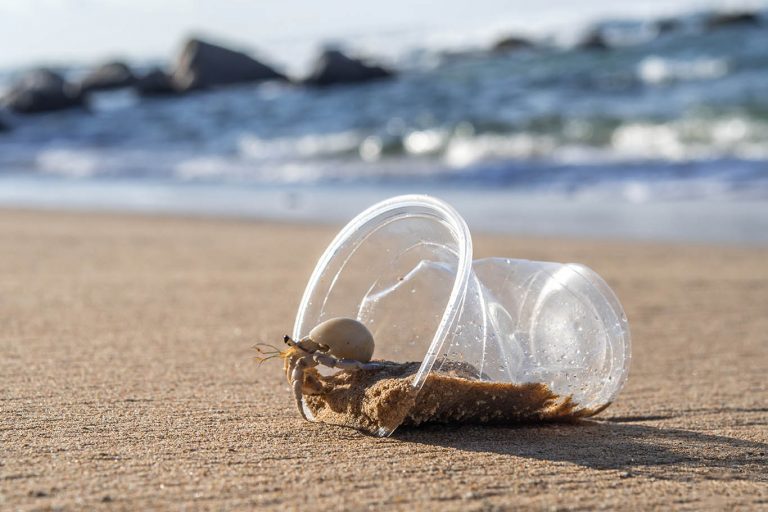DIVING NEWS
Plastics mar hermit-crab home-making
Also Read: Ghost-fishing means plastics infest deep coral
Hermit crabs are becoming less discriminating when it comes to picking out a new home – and it seems to be the fault of plastics pollution.
New research from Queen’s University Belfast and Liverpool John Moores University has added to the weight of scientific evidence that the ocean microplastics crisis is posing a serious threat to biodiversity.
As much as 10% of global plastics production is believed to end up in the sea, and the study focused on how this affected hermit crabs, which are considered a key component in balancing the marine ecosystem.
Hermit crabs use snail-shells to protect their soft abdomens, upsizing constantly to bigger homes that enable them to grow, reproduce and survive.
The researchers divided the crabs between experimental tanks, half of them containing microplastics and the others none. After five days they were moved into low-quality shells but with the option of alternative high-quality shells that offered more protection.
It was found that after being exposed to microplastics the crabs became less inclined to touch or enter the high-quality shells.
“Our research shows for the first time how microplastics are disrupting and causing behavioural changes among the hermit-crab population,” said Dr Gareth Arnott, lead researcher from the School of Biological Sciences at Queen’s University.
“These crabs are an important part of the ecosystem, responsible for ‘cleaning up’ the sea through eating up decomposed sea-life and bacteria.
“By providing a hard, mobile surface, hermit crabs are also walking wildlife gardens. They host over 100 invertebrate species – far more than live snails or non-living substrates. Additionally, commercially valuable species prey on hermit crabs, such as cod, ling, and wolf-fish.
“With these findings of effects on animal behaviour, the microplastics pollution crisis is therefore threatening biodiversity more than is currently recognised, so it is vital that we act now to tackle this issue before it becomes too late.”
The research is published in the Royal Society’s Biology Letters.

